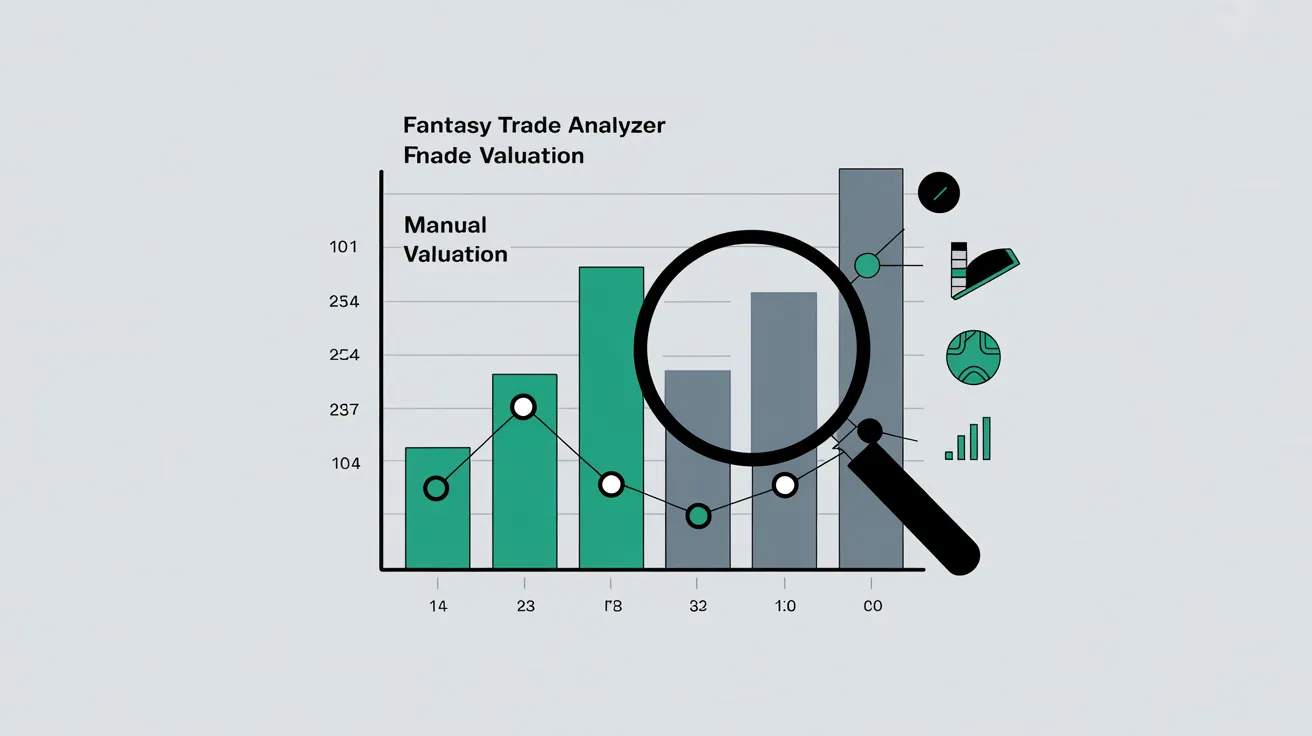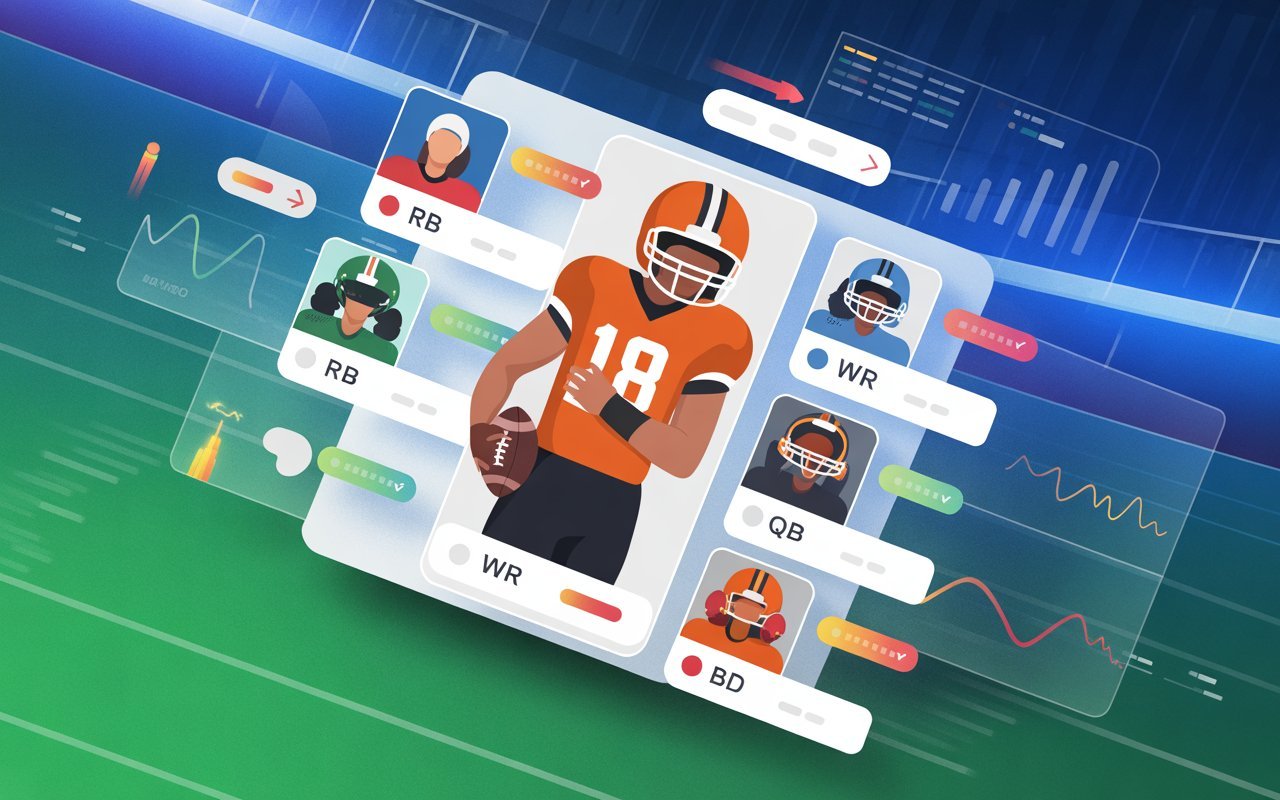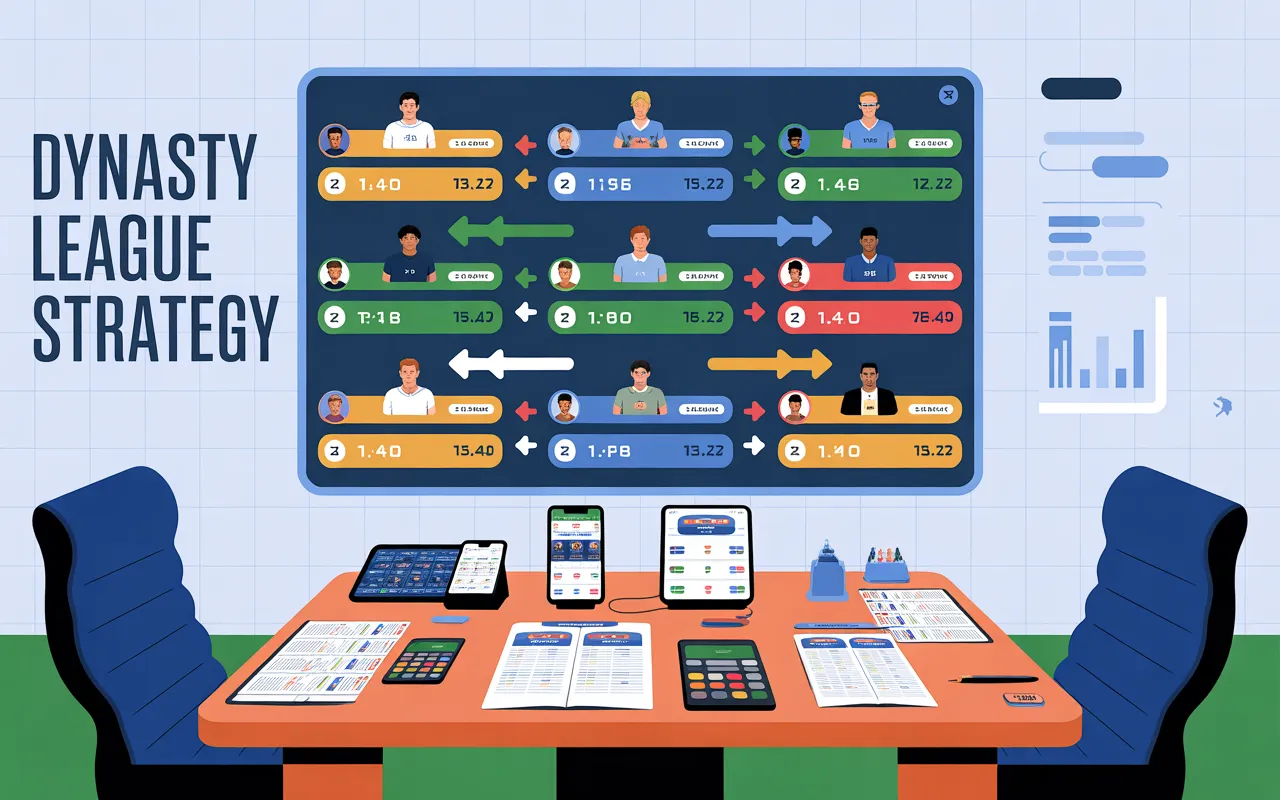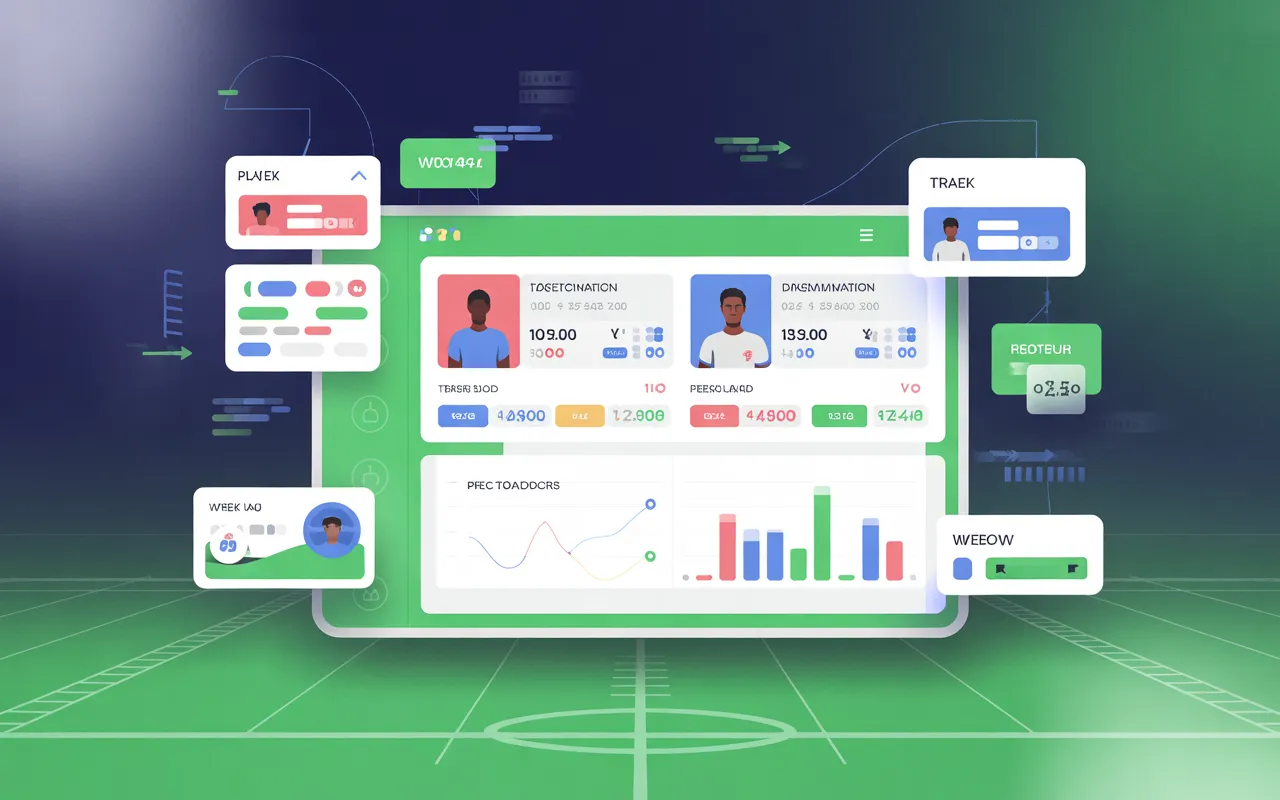In the world of fantasy football, trades can make or break your season. A single deal could mean the difference between winning your league championship or missing the playoffs entirely. According to a FantasyPros stat, over 68% of league-winning rosters made at least one mid-season trade. That raises a big question: Should you trust a fantasy trade analyzer vs manual valuation when making those crucial decisions?
Fantasy owners often face this dilemma. Automated analyzers like Fantasy Trade Analyzers use AI trade analyzers, data-driven projections, and trade value charts. On the other hand, manual methods rely on your own research, intuition, and adjustments for context like positional scarcity or injury status. Both approaches have value, but knowing when to use which can help you maximize trade fairness and long-term roster strength.
In this guide, we’ll break down key insights, share real case studies, and explain why combining both strategies is the smartest play.
Want instant projections with fewer mistakes? Try the Fantasy Trade Analyzers tool today.
Why This Debate Matters in 2025
Fantasy football in 2025 has evolved with AI, language models, and tools like FantasycalcAI Trade Analyzer or FantasySP providing automated insights. But even the smartest tool has blind spots. Factors like team composition, timeline (rebuilding vs competing), and unique league settings (e.g., superflex, TE premium) often require human judgment.
Here’s why this matters:
- AI analyzers are faster but may miss context like a weak WR position.
- Manual valuation catches nuances but takes time and effort.
- A hybrid approach offers both speed and depth, helping you avoid lopsided trades and overspending.
At the end of the day, trades aren’t just numbers. They’re about aligning with team goals, player news, and even your league’s trade culture.
| Aspect | Fantasy Trade Analyzer | Manual Valuation |
| Speed | Instant results with AI | Slower, requires research |
| Context | Limited to data & projections | Can adjust for team needs |
| Accuracy | Strong for projections, weak on nuance | Strong for unique settings |
| Usability | Plug-and-play, easy for beginners | Better for experienced players |
| Best Use | Quick checks & trade ideas | Deep evaluation of big trades |
Pro tip: Use the Fantasy Trade Analyzers tool to get baseline values, then tweak them manually for your league’s nuances.
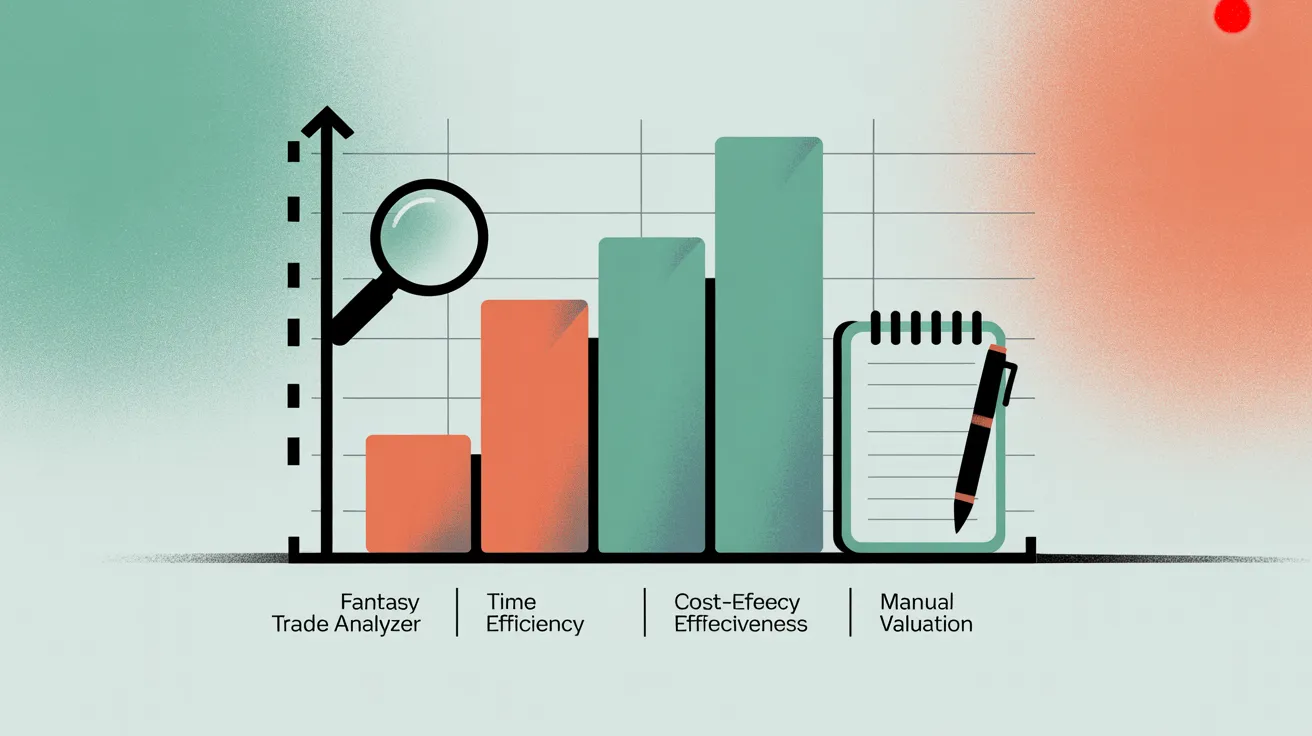
How to Manually Value Fantasy Trades
Step 1. Identify league format.
Is it PPR, standard scoring, dynasty, or keeper? Settings define player values.
Step 2. Evaluate players individually.
Check projections, injury news, and depth charts on sources like ProFootballReference and ProFootballFocus.
Step 3. Apply a trade value formula for fantasy football.
Example: (Player’s projected points ÷ replacement-level average) + positional scarcity factor.
Step 4. Adjust for team needs.
If you lack depth at RB, prioritize positional stability over pure points.
Step 5. Consider future value.
In dynasty leagues, discount future picks manually (e.g., 2026 1st ≈ current WR2).
Want to save time? Build a fantasy trade valuation spreadsheet so you can update weekly.
Limitations of Fantasy Trade Analyzers
Even the best tools like Fantasy Football Trade Analyzer or FantasySP have weaknesses:
- Struggle with rookie and pick trades.
- Don’t account for coaching decisions or suspensions.
- Can’t capture gut feeling vs analyzer recommendation moments.
- May misfire in superflex leagues or TE premium formats.
This is why a manual layer of review is always smart.
If you’re worried about missteps, check out our guide on common mistakes using trade analyzers to avoid pitfalls and sharpen your strategy.
Case Study: My Personal Experience
Last season, I faced a tough trade: Jonathan Taylor (injured) for Jamaal Williams (overperforming). The fantasy trade analyzer said the deal was even. I trusted it and accepted.
Mistake? Absolutely. Williams regressed, while Taylor recovered and outscored him during the playoff run. Lesson learned: always backtest a manual trade valuation model against scenarios like injuries or timeline differences.
What worked better? Using Fantasy Trade Analyzers as my first filter, then layering in manual context about injury recovery times. This hybrid strategy now saves me hours while improving trade outcomes.
Expert Insight
Andrew Cooper, FantasyAlarm says,
“An analyzer gives you the numbers, but numbers alone don’t win leagues. Context and timing do.”
Advanced Tips for Smarter Trade Valuation
- Tweak analyzer outputs for unique scoring. Add custom multipliers for your league.
- Use a manual valuation checklist before accepting trade. Confirm roster depth, bye weeks, and injury risk.
- Compare manual vs crowdsourced trade valuations. Sites like dynastydealmaker or FantasyPros Trade Finder reveal community sentiment.
- Look for undervalued players’ trades manually discovered. Example: veterans overlooked due to hype around rookies.
- When not to trust a trade analyzer: rebuilding vs contending scenarios.
Conclusion About Fantasy trade analyzer vs manual valuation
When it comes to fantasy trade analyzer vs manual valuation, the truth is simple: use both. Automated tools provide speed, but human judgment ensures accuracy. Together, they create a winning edge for 2025 leagues.
Ready to upgrade your trade strategy? Bookmark this guide, explore our other resources, and most importantly: Try our free Fantasy Trade Analyzers tool today and get instant trade insights.
FAQs About Fantasy trade analyzer vs manual valuation
What is the main difference between a fantasy trade analyzer vs manual valuation?
An analyzer uses data and projections for quick results, while manual valuation accounts for team-specific needs and context.
How to manually value fantasy trades effectively?
Check projections, roster needs, league format, and use a trade value formula. Adjust for injuries and future picks.
Why should I use Fantasy Trade Analyzers instead of others?
Because it combines AI trade analyzer speed with flexibility. It also syncs your league for personalized insights. Try the Fantasy Trade Analyzers tool.
When should I not trust a trade analyzer?
Avoid full reliance when trades involve rookies, future picks, or unique scoring formats like TE premium.
Can I build my own fantasy trade valuation spreadsheet?
Yes, and it’s recommended for manual checks. Pair it with Fantasy Trade Analyzers for the best hybrid approach.

